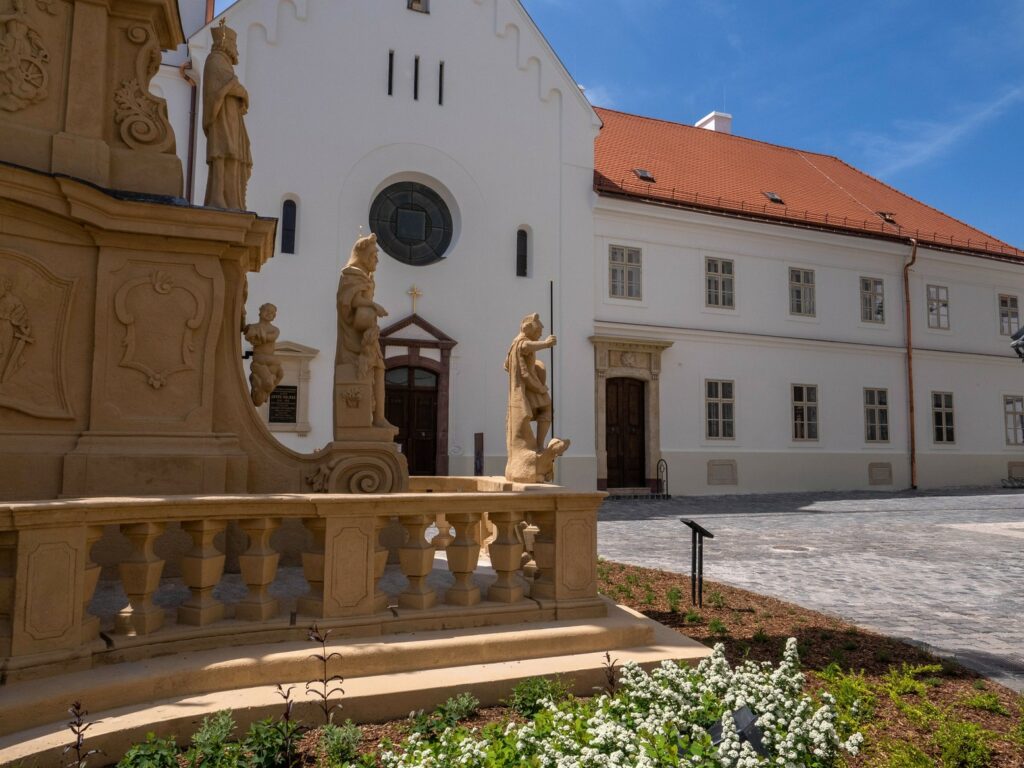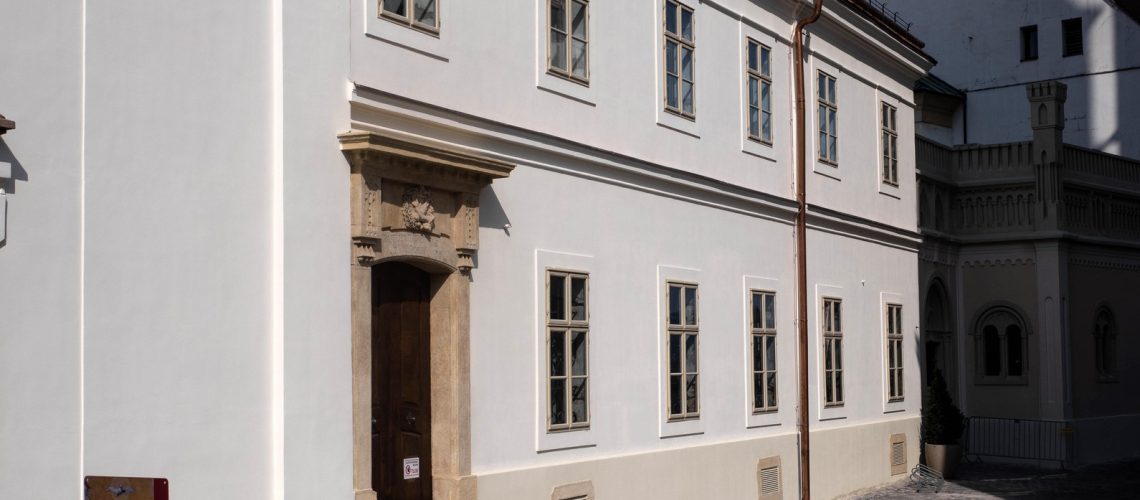The cornerstone of the present monastery's façade was laid in 1722 by Vice-Bishop Mihály Zádori, and construction was completed around 1730. Local tradition has it that in 1795, Jakab Sigray, convicted and executed in a trial against the Martinovich movement, found refuge here for a short time.
After the World War II and the dissolution of the order in 1950, the building came to be used as a girls' hall of residence, and later as a centre for offices, and since 1984 it has been a home for priests. At the south end of the refectory in the west wing are three paintings forming a harmonious unity, which were brought here from Budapest in the time of Austrian Emperor Joseph II. The side walls are decorated with paintings of Franciscan saints.






